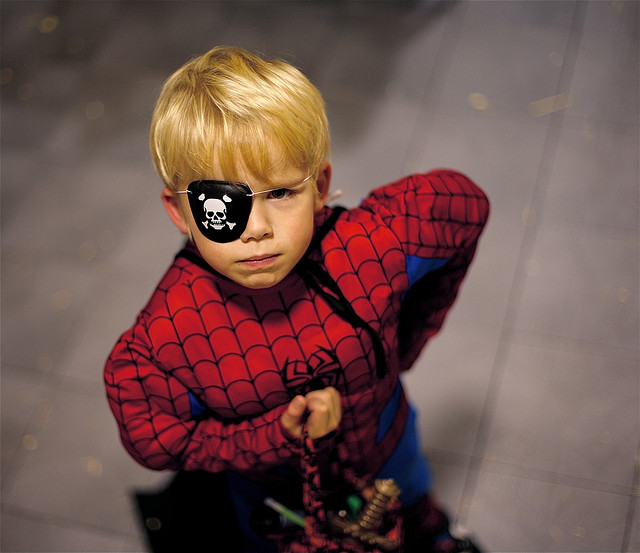Got your costume for Halloween yet? Whether you’re a zombie or a princess, passing out candies at home or masquerading at a party, safety should play an important role in festivity planning for October 31.
Chemistry is very much ingrained in and beneficial to those safety plans. Many Halloween safety tips from scientific and health experts at American Academy of Pediatrics (AAP), Consumer Product Safety Commission (CPSC), National Fire Protection Association (NFPA) and Underwriters Laboratories (UL), among others, rely on the benefits of chemistry:
Innovative costume materials key to safety
For Halloween revelers, Underwriters Laboratories (UL), American Academy of Pediatrics (AAP) and Consumer Product Safety Commission (CPSC) have recommended costumes, masks, beards and wigs made with flame-resistant fabrics. This includes nylon or polyester. Shoppers can also look for the label “Flame Resistant.”
Flame-resistant fabrics will resist burning and should extinguish quickly. To minimize the risk of contact with candles and other fire sources, avoid costumes made with thin or sheer materials and also outfits that are baggy, such as billowing sleeves and ragged, trailing skirts.
The AAP also suggests costumes that are bright and reflective in general. More on that below.
Light up your night with safe chemistry
Chemistry has enabled many lighting innovations. This bright science keeps trick or treaters visible to cars and cyclists on dark, spooky nights such as Halloween. Here are a few of the items you should stock up on to stay visible and safe on Halloween:
- Light sticks will keep you glowing. The plastic tubes typically hold a hydrogen peroxide solution, a phenyl oxalate ester solution and a fluorescent dye which creates its glow. It’s important that children do not break open glow sticks. Chemicals inside glow sticks have low toxicity but can be irritating to eyes and skin upon contact, and mouth and throat if swallowed (click here for more information on glow stick safety from Kids + Chemical Safety).
- Chemistry creates unbreakable flashlights with polycarbonate plastic. Flashlights are often powered by lithium batteries. Both Lithium and Lithium-ion batteries hold their charge longer than other batteries and can also be more environmentally friendly.
- Reflective patches, stickers and decals make great accessories to Halloween costumes and help with visibility. Chemistry makes these skin adhesives easy to apply and less irritating.
- LED accessories such as headlamps can also be brought along on any candy-seeking expeditions or used as the lighting to replace candles in pumpkins. Headlamps keep your hands free to maneuver and superior LED lighting in general is enabled by rare earth technology—which can keep your Halloween bright.
For decorations, keep it fire resistant
According to Underwriters Laboratories, every Halloween, the second most “decorated” holiday after Christmas, potentially flammable costumes and improperly-used decorations contribute to a significant increase in home fires, burn-related injuries and accidents.
Decorations are the first thing to ignite in 900 reported home fires each year. Two of every five of these fires were started by a candle according to the National Fire Protection Association (NFPA). Also according to the NFPA, candles are the cause of approximately 15,000 reported house fires every year.
Keep these fire safety statistics in mind when considering the placement of candles. Candles should be far from decorations or window treatments and paper.
UL specifically recommends against “Frankensteining lights,” that is plugging in electrical decorations that draw more watts than what the cord was rated for. Use special, heavy duty extension cords for high wattage decorations such as fog machines and electrically-powered inflatable decorations. Read more of UL’s tips here.
Finally, once the fun and scares have ended, check all candy and treats to confirm that they are factory wrapped to prevent germs, food illnesses and tampering.







